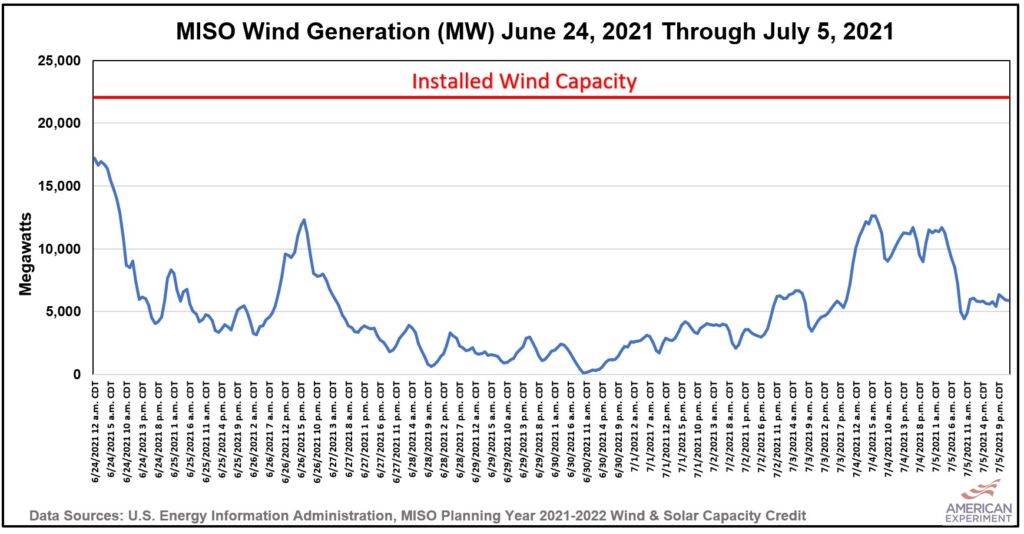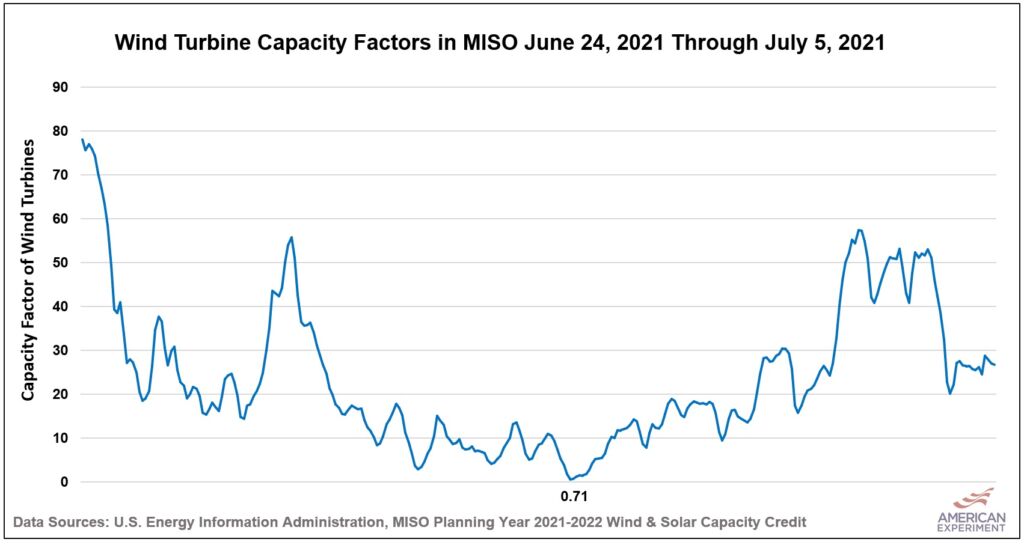Where did the wind go last week?
Advocates of wind turbines often argue that their unreliability can be offset by building even more wind turbines and transmission lines to distant areas because the wind is always blowing somewhere.
But last week, electricity generation from wind turbines was low throughout the entire 15 state power grid to which Minnesota belongs, the Midcontinent Independent Systems Operator (MISO), even though electricity demand was very high.
The graph below shows data from the United States Energy Information Administration for wind generation in the regional electric grid on an hourly basis from June 24, 2021, through July 5, 2021.

The data show wind generation was strong at around midnight on June 24, but fell throughout the rest of the week. The red line shows what the wind turbines could have been producing if they were operating at their full potential, which they failed to do at any point during this time period.
As you can see, the wind was especially unproductive from June 27, 2021, through July 2, 2021.
We measure power plant productivity with a metric called a “capacity factor,” which is simply a calculation of how much electricity a power plant produced divided by the amount of electricity it would have generated if it were operating at 100 percent of its potential output. We then multiply this number by 100 to show the number as a percentage.
At midnight on June 24, 2021, wind turbines were operating at about 80 percent of their capacity factor, but by 11 am on June 30, 2021, all of the wind turbines in the 15 state regional grid were generating just 0.71 percent of their potential output.

Environmental groups pretend that wind, solar, and battery storage can power our lives as reliably as coal, natural gas, and nuclear power plants, but incidents of rolling blackouts are increasing in the parts of the world that are the most reliant upon wind and solar, and this trend will continue into the future.

The data above demonstrate an important aspect of wind generation that few people seem to realize: it can provide virtually zero electricity even with massive installations of wind turbines. Becoming more dependent upon an unreliable resource that comes and goes as it pleases is a dangerous way to structure an electric grid, as Texas and California have found out the hard way.